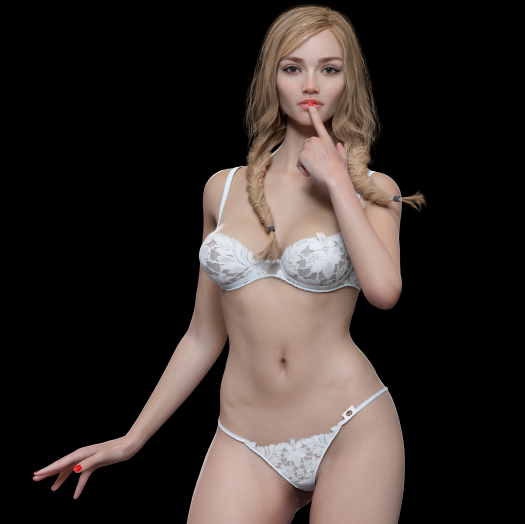Free AI Clothes Remover: Uses, Ethics & Best Tools [Year]
Ever wondered if you could effortlessly visualize a new design on a model without the constraints of physical prototypes or endless photoshoots? The rise of AI clothes removers is not just a technological novelty; it's a paradigm shift, offering an array of creative and professional possibilities that were once confined to imagination.
Imagine being able to transform fashion design, enhance artistic projects, and explore creative avenues, all with the aid of artificial intelligence. An ai clothes remover is rapidly evolving, offering features that cater to designers, artists, and everyday users. The core promise lies in its ability to digitally manipulate images, removing or changing clothing in a realistic manner. Many of these platforms are offering their basic functionalities for free, eliminating subscription fees and complex pricing plans. New users can often test the waters without any initial investment, with some platforms even providing a set number of free trials daily.
| Feature | Details |
|---|---|
| Name | AI Clothes Remover Tools |
| Function | Digitally removes or changes clothing in images using AI. |
| Applications | Fashion design, artistic projects, creative exploration. |
| Cost | Many offer free core features with limited trials. |
| Privacy | Ensured through secure image processing and confidential handling of data. |
| Ethical Concerns | Potential misuse and invasion of privacy are significant concerns. |
| AI Models Used | Stable Diffusion, Generative Adversarial Networks (GANs). |
| Examples | Unclothy, Slazzer 3.0, Undress AI, Pincel AI. |
| Link | Example AI Tool Website (Replace with an actual link to a relevant AI tool website) |
But what exactly can you do with an ai clothes remover? The applications are surprisingly diverse. For fashion designers, it's a game-changer. Instead of creating physical prototypes, designers can visualize how garments fit and drape on different body types digitally. This not only saves time and resources but also allows for more experimentation and creativity in the design process. Artists can enhance or modify images for artistic projects, ensuring a seamless and realistic finish. Whether it's altering the color of a dress or completely changing the style of an outfit, these tools provide a virtual canvas for creative expression.
- Your Guide To Streaming Downloading Web Series In 2024
- Hyungry Temp Replacement Ep 3 What Makes It Special
However, the allure of instant digital alteration also brings forth a host of ethical considerations. Tools like Unclothy, which are designed to "undress" photos using advanced AI models, raise significant concerns. While these tools can automatically detect and remove clothing, generating deepnude images, the potential for misuse is undeniable. The creation and distribution of non-consensual intimate images is a serious violation of privacy, and the ease with which these tools can be used exacerbates the problem. Similarly, platforms that claim to offer a "free ai service that can undress people in photos" should be approached with extreme caution. The promise of free access often masks underlying risks, including the potential for data breaches and the unethical use of generated images.
Despite the ethical minefield, the technology itself continues to advance. AI clothes changers, for example, provide a more benign application of the same underlying technology. These tools allow users to digitally swap, change, or experiment with clothing styles, colors, and patterns on photos or videos. By leveraging artificial intelligence, they can simulate how different outfits or specific garments, like a dress, suit, or bikini, would look on someone without the need for physical try-ons. This functionality is particularly useful for online retailers, who can offer virtual try-on experiences to customers, and for individuals who want to experiment with their style without buying new clothes.
One such example is Slazzer 3.0, which is advertised as a "free undress ai tool" available online. While Slazzer 3.0 and similar platforms may offer legitimate uses, it's crucial to be aware of the potential for misuse and to exercise caution when uploading personal images. The promise of transforming portraits by "undressing and seamlessly swapping outfits" should be tempered with an understanding of the ethical implications and the potential for harm.
- Ari Melbers The Beat What You Need To Know Now
- Hyungry Temporary Replacement Ep 3 Why Its A Mustsee More
The market is increasingly populated with ai clothes remover tools, some of which claim to be 100% free. These platforms often entice new users with the promise of no subscription fees or pricing plans, allowing them to test the platform's capabilities without any upfront cost. Many offer a limited number of free trials per day, enabling users to experience the technology firsthand. However, it's important to scrutinize the terms of service and privacy policies of these platforms to ensure that your data is protected and that your images are not being used for unintended purposes.
Using an ai clothes remover typically involves a straightforward process. Users upload a photo to the platform's tool, tap a "generate" button, and the AI algorithms automatically erase the clothes, replacing them with a digitally generated alternative. Some tools also allow users to swap clothes, effectively changing the outfit in the photo. The ease of use is a major selling point, but it also contributes to the potential for misuse.
The proliferation of these tools has led to a surge in "best of" lists and comparisons. Articles promising to reveal the "11 best free undress ai apps to remove clothes from images" or the "top 5 undress ai apps of 2025 for realistic, fast, and private nudify results" are common. These lists often compare features, pricing, and free trials, helping users navigate the crowded market. However, it's essential to approach these recommendations with a critical eye, considering the ethical implications and potential risks associated with each tool.
At its core, an ai clothes remover leverages sophisticated artificial intelligence for image transformation. Platforms like Undress AI employ deep learning algorithms, including models like stable diffusion and generative adversarial networks (GANs), to digitally generate versions of uploaded images where clothing appears realistically removed. These algorithms are trained on vast datasets of images, allowing them to accurately predict what lies beneath the clothing and to create plausible representations of the underlying anatomy.
The implications for the fashion industry are particularly profound. An ai clothes remover can revolutionize the design process, enabling designers to effortlessly prototype and visualize new clothing concepts on models without the need for physical garments. This not only accelerates the design cycle but also reduces the costs associated with traditional prototyping methods. Designers can experiment with different styles, colors, and patterns, iterating on their designs in a virtual environment before committing to physical production.
However, the same technology that empowers fashion designers also poses a threat to individual privacy. The ability to realistically remove clothing from images raises serious concerns about non-consensual deepfakes and the potential for online harassment. It's crucial to be aware of these risks and to take steps to protect your personal information and images from misuse.
The ongoing debate surrounding ai clothes remover tools highlights the complex interplay between technological innovation and ethical responsibility. While these tools offer a range of creative and professional possibilities, they also pose significant risks to individual privacy and safety. As the technology continues to evolve, it's essential to engage in a thoughtful and informed discussion about its ethical implications and to develop appropriate safeguards to prevent misuse.
Tools like Pincel AI offer multiple options for image manipulation. Understanding the nuances of each option is crucial for responsible use. Some tools focus on removing unwanted elements from clothing photos, while others utilize artificial intelligence to "undress" subjects and create nude images. Users can edit images precisely, erasing imperfections, smoothing skin texture, and more. However, it's important to remember that the power to manipulate images comes with a responsibility to use that power ethically and respectfully.
The availability of these tools in multiple languages, such as German ("Laden sie einfach ein bild hoch und entfernen sie die kleidung mit nur einem klick"), underscores their global reach and potential impact. Whether used for creative design, the fashion industry, or personal entertainment, the ethical considerations remain paramount. Undress AI, for example, is explicitly designed to modify images to create the illusion that individuals are unclothed. While this tool leverages sophisticated techniques to alter photographs accurately, its primary purpose raises serious ethical concerns.
In conclusion, the world of ai clothes remover tools is a complex and rapidly evolving landscape. While these tools offer a range of exciting possibilities, they also pose significant risks to individual privacy and safety. By understanding the technology, its potential applications, and its ethical implications, we can make informed decisions about its use and work to ensure that it is used responsibly and ethically.
- Sean Parker From Napster To Facebook His Untold Story
- Freezenova Unblocked Games Your Gateway To Fun Play Now

Undress AI Create Deepnude for FREE

Undress AI Free Tool How to Remove Clothing from Any Image

11 Free Undress AI Apps To Remove Clothes From Images